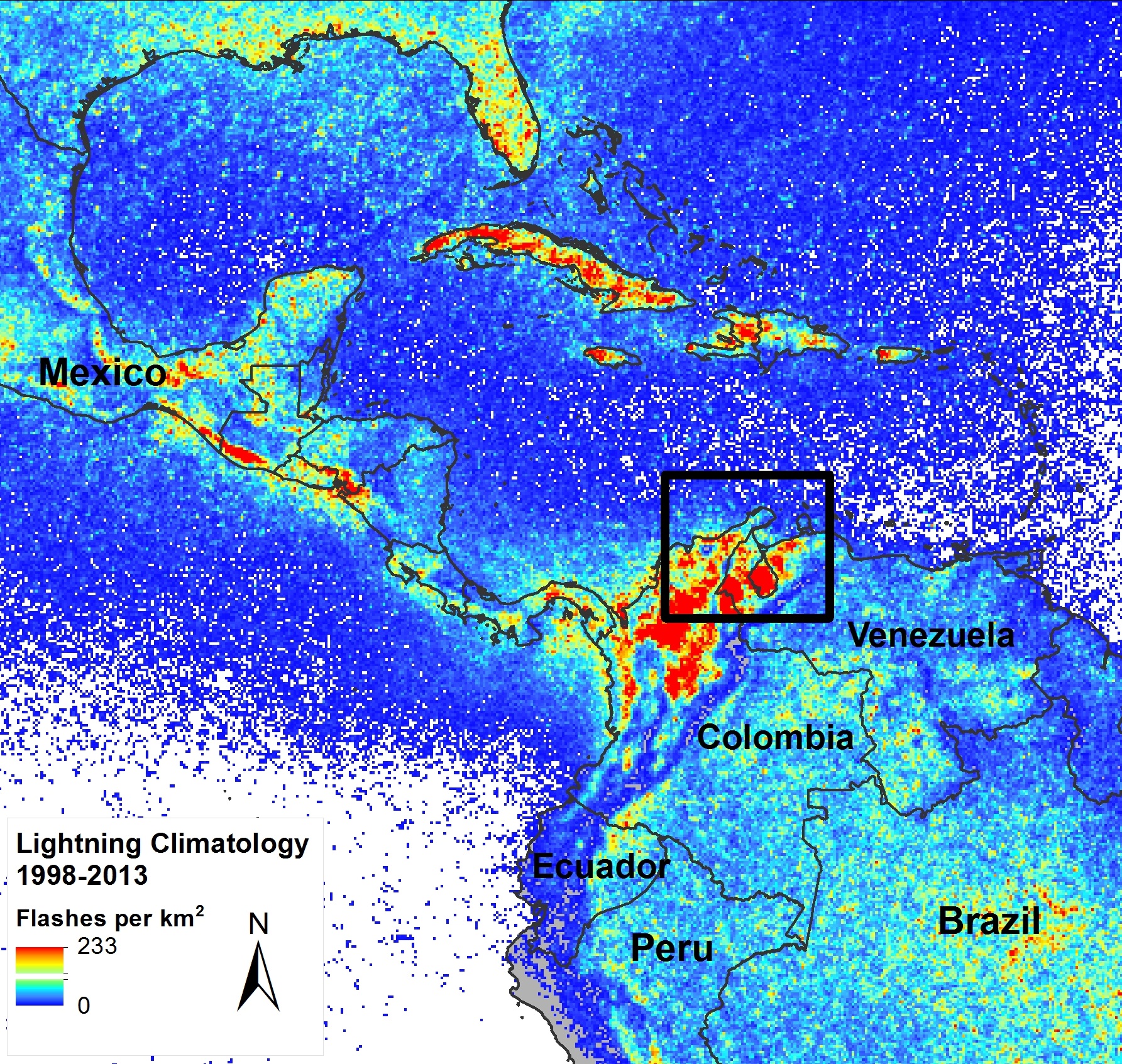Highlights from Albrecht et. al's 'Where Are the Lightning Hotspots on Earth?’ publication
Albrecht, R., S. Goodman, D. Buechler, R. Blakeslee, and H. Christian, 2016: Where Are the Lightning Hotspots on Earth?. Bull. Amer. Meteor. Soc., 97, 2051–2068, doi: 10.1175/BAMS-D-14-00193.1.
- Sixteen years of observations from the Lightning Imaging Sensor (LIS) have been reprocessed using a new analysis technique. This new technique generates a series of very high resolution lightning climatology datasets gridded at 0.1 degrees.
- These new climatology datasets have revealed Lake Maracaibo, Venezuela as the peak lightning hotspot on Earth. A maximum flash rate of 233 flashes per square kilometer per year has been observed at Lake Maracaibo. The previously identified top lightning hotspot was located in the Democratic Republic of the Congo and is now the second greatest lightning hotspot on the globe.
- Lake Maracaibo lies in a large valley between two ridges of the Andes Mountains. Additionally, Lake Maracaibo is located near the Gulf of Venezuela and the Caribbean Sea. Lake Maracaibo’s unique location in combination with the regional wind flow pattern makes the lake an ideal place for thunderstorm and lightning development during the nighttime.
-
Globally the lightning diurnal cycle shows a maximum lightning during the afternoon over land while seasonally the highest flash density rates occur during the summer.
- Given that 24 of the first 30 locations with the most lightning flashes are located near mountainous regions, a relationship between lightning hotspots and topography is suggested.
Albrecht, R., et al., 2011. The 13 years of TRMM Lightning Imaging Sensor: from individual flash characteristics to decadal tendencies. XIV Int. Conf. Atmos. Elec., Rio de Janeiro, Brazil.
Cecil, Daniel J., Dennis E. Buechler and Richard J. Blakeslee. "Gridded lightning climatology from TRMM-LIS and OTD: Dataset description." Atmospheric Research 135-136. (2014): 404 -414. doi: 10.1016/j.atmosres.2012.06.028
Christian, H., et al., 203. “Global frequency and distribution of lightning as observed from space by the Optical Transient Detector.” Journal of Geophysical Research, 108, 4005, doi:10.1029/2002JD002347
Oct 19th, 2018









